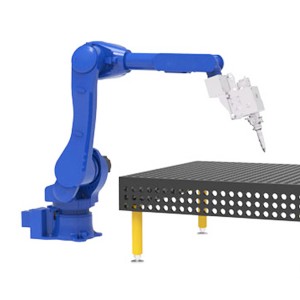How to use laser welding machine?
Guide of using laser welding machine
Laser welding machines are used to join two or more pieces of metal together with the help of a highly focused laser beam. They are often used in manufacturing and repair work, where a high degree of accuracy and precision is required. Here are the basic steps to follow when using a fiber laser welder:
• Step 1: Preparation
Before using a fiber laser welding machine, it is important to prepare the workpiece or pieces to be welded. This typically involves cleaning the surface of the metal to remove any contaminants that could interfere with the welding process. It may also involve cutting the metal to the correct size and shape if necessary.

• Step 2: Set up the Machine
The laser welding machine should be set up in a clean, well-lit area. The machine will typically come with a control panel or software that will need to be set up and configured before use. This may involve setting the power level of the laser, adjusting the focus, and selecting the appropriate welding parameters based on the type of metal being welded.
• Step 3: Load the Workpiece
Once the handheld fiber laser welding machine is set up and configured, it is time to load the workpiece. This is typically done by placing the metal pieces in the welding chamber, which may be enclosed or open depending on the design of the machine. The workpiece should be positioned so that the laser beam can be focused on the joint to be welded.

• Step 4: Align the Laser
The laser beam should be aligned so that it is focused on the joint to be welded. This may involve adjusting the position of the laser head or the workpiece itself. The laser beam should be set to the appropriate power level and focus distance, based on the type and thickness of the metal being welded. If you want to laser weld thick stainless steel or aluminum, you shall choose 1500W laser welder or even high power portable laser welding machine.
• Step 5: Welding
Once the laser beam is aligned and focused, it is time to begin the welding process. This is typically done by activating the laser beam using a foot pedal or other control mechanism if you choose to use a portable laser welding machine. The laser beam will heat the metal to its melting point, causing it to fuse together and form a strong, permanent bond.


• Step 6: Finishing
After the welding process is complete, the workpiece may need to be finished to ensure a smooth and consistent surface. This may involve grinding or sanding the surface of the weld to remove any rough edges or imperfections.
• Step 7: Inspection
Finally, the weld should be inspected to ensure that it meets the desired quality standards. This may involve using non-destructive testing methods such as x-rays or ultrasonic testing to check for any defects or weaknesses in the weld.
In addition to these basic steps, there are some important safety considerations to keep in mind when using a laser welding machine. The laser beam is extremely powerful and can cause serious injury or damage to eyes and skin if not used properly. It is important to wear appropriate safety gear, including eye protection, gloves, and protective clothing, and to follow all safety guidelines and precautions provided by the manufacturer of the laser welding machine.
In summary
Handheld fiber laser welding machines are a powerful tool for joining metals with high precision and accuracy. By following the steps outlined above and taking appropriate safety precautions, users can achieve high-quality welds with minimal waste and reduced risk of injury or damage.
Recommended Laser Welding Machine
Want to invest in Laser Welding Machine?
Post time: Mar-10-2023



